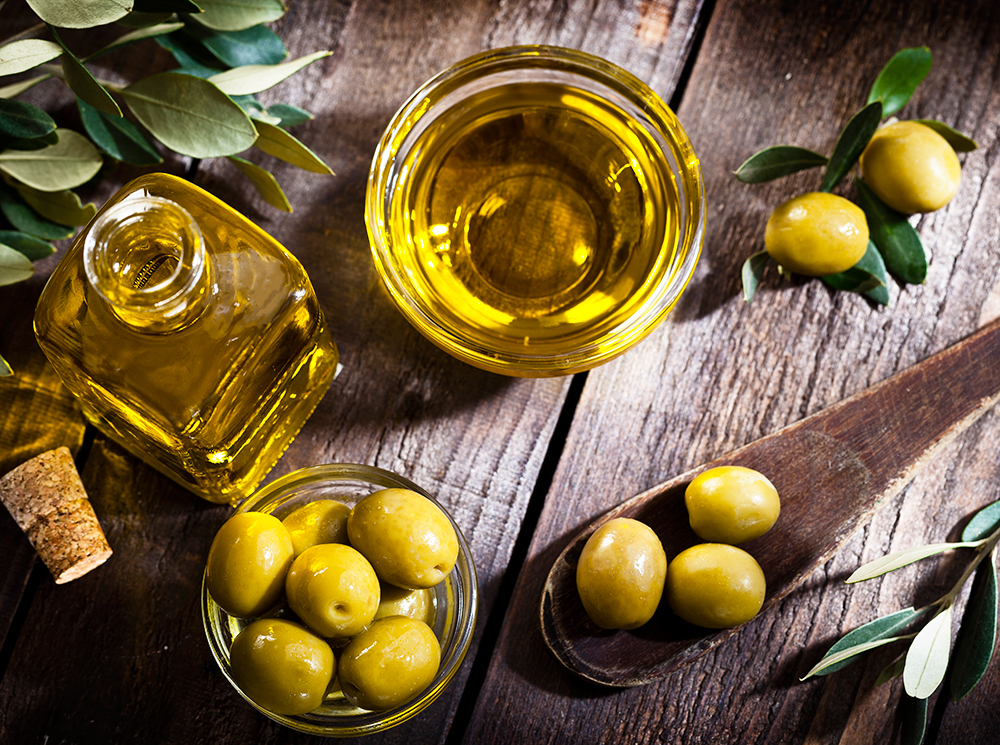Spain’s olive oil consumption fell by 10.4%

Olive oil has always been the most important product in Spanish gastronomy, but its consumption has been decreasing since 2022 due to price increases. The cost of this product has increased by 177% in the last 3 years. Residents have responded to this fact with a marked reduction in its consumption – FinancialTime reports
Last year, Spanish households consumed 376.5 thousand liters of olive oil, which is 43.5 thousand liters less than in 2022. Experts emphasize that the 10.4% drop in consumption in one year is the biggest year-on-year drop in consumption of this product since statistics began.
Ignacio Silva, CEO of Deoleo, the world’s largest seller of olive oil by revenue, said thrifty consumers are changing their habits to cope with the effects of droughts that have ruined crops.
“We have clearly reached a price that is a problem for Spanish and Italian consumers. Six to eight months ago we started to notice that when we crossed the €8 per liter barrier, people were consuming less or switching to vegetable oils,” he said.
Droughts and heatwaves exacerbated by climate change have reduced olive oil production in Spain, the world’s largest producer, as well as in other major producing countries such as Italy and Greece, leading to a global shortage.
Only 2.4 million tons have been produced in the past two seasons, far short of the usual annual demand of 3.2 million tons, according to Juan Vilar, a Spanish consultant to olive oil producers and marketers. “This is the first time in history that we have had two bad seasons one after the other,” he said.
Export bans imposed by some countries have also created additional pressure. In an attempt to curb rampant inflation, Turkey imposed an export ban – now partially lifted – on bulk and drum olive oil last August. Syria and Morocco also restricted exports in October, further reducing global supplies and driving up prices.
Earlier this year, the EU statistics office reported price increases across the bloc, with buyers in Portugal, Greece and Spain seeing prices rise by more than 60% year-on-year. Italians saw a 45% increase.
In Spain, which produces more olive oil than anyone else, consumers bought 22% less in the first 20 weeks of this year than they did in 2023, according to industry data. Sales volumes are down 30% from 2022, when prices began to rise.
Deoleo states, sales volumes are down in the U.S. as well, but not as sharply as in the Mediterranean. “In the U.S., new consumers are entering the category every day,” Silva said. “That penetration growth may be slowing down, but it’s still happening because there are still plenty of opportunities.”
The U.S., which gets most of its olive oil purchases from Spain and Italy, is now importing less but at a higher price. Last year, the world’s second-largest consumer bought nearly 350,000 tons worth $2.19 billion, compared with 410,000 tons worth $1.86 billion in 2022, according to the International Trade Center – suggesting some buyers are also being deterred by higher prices.
In Spain, where olive oil is the backbone of the agricultural economy in the south, worried farmers are hoping spring rains and less severe summer temperatures will lead to an improved harvest between October and January.
Silva said: “One problem is the price, which reduces volumes, but the other is availability… Olive oil is simply not available. There is no oil in the factories today.”
Spain’s olive oil production has been cut by more than half. From a peak of 1.49 million tons in 2021-2022, drought and heat waves reduced its output to 666,000 tons in 2022-2023, before recovering modestly to 851,000 tons in 2023-2024, according to the agriculture ministry.
Italy, the second-largest producer, harvested less than 240,000 tons in 2023, down 25% from the previous year. Greece, meanwhile, produced just 120,000 tons of olives this year, less than half of the previous crop.
Expana analyst Kyle Holland believes the weather is to blame: “It’s been too hot, too dry and too long.”
Deoleo, which does not own its own olive groves, tried to make up for the supply shortfall by importing olive oil from Argentina and Chile. While wholesale prices rose, Silva claims the company maintained its profit margin by gradually passing 90% of the increase on to consumers. In 2023, it recorded a net profit of €30 million on sales of €838 million.
Spaniards, accustomed to paying less than €5 per liter of virgin oil four years ago, were stunned to see prices for premium brands rise to €14.
In Italy, a recent survey by the Piepoli Institute found that almost a third of shoppers have cut back on their olive oil consumption as prices have risen to €9 a bottle. Analysts also warn that younger Italians and Spaniards are cooking less at home, which could affect demand.
Silva said that for “hot” use, i.e. frying, Spaniards and Italians are turning to low-cost alternatives such as corn and sunflower oil.
However, Deoleo’s CEO is optimistic about the future of Spain and Italy, the most mature markets, accounting for 41% of sales. He predicted that changes in habits will prove temporary rather than structural once yields improve. “Prices will come down during the year,” he said.
Read also
Merry Christmas and Happy New Year!
Bangladesh to purchase rice, edible oil and lentils to stabilize prices ahead of R...
Ukraine does not claim the money received by Polish or Hungarian farmers – K...
Algeria purchased half a mln tons of durum wheat
Ban on Chinese drones raises concerns among US soybean farmers
Write to us
Our manager will contact you soon



